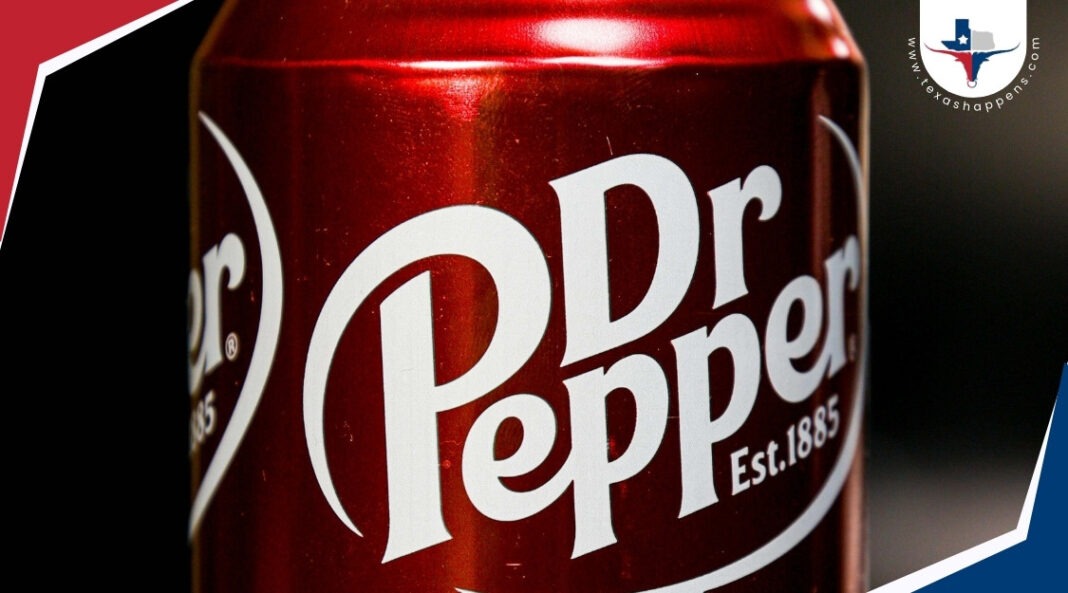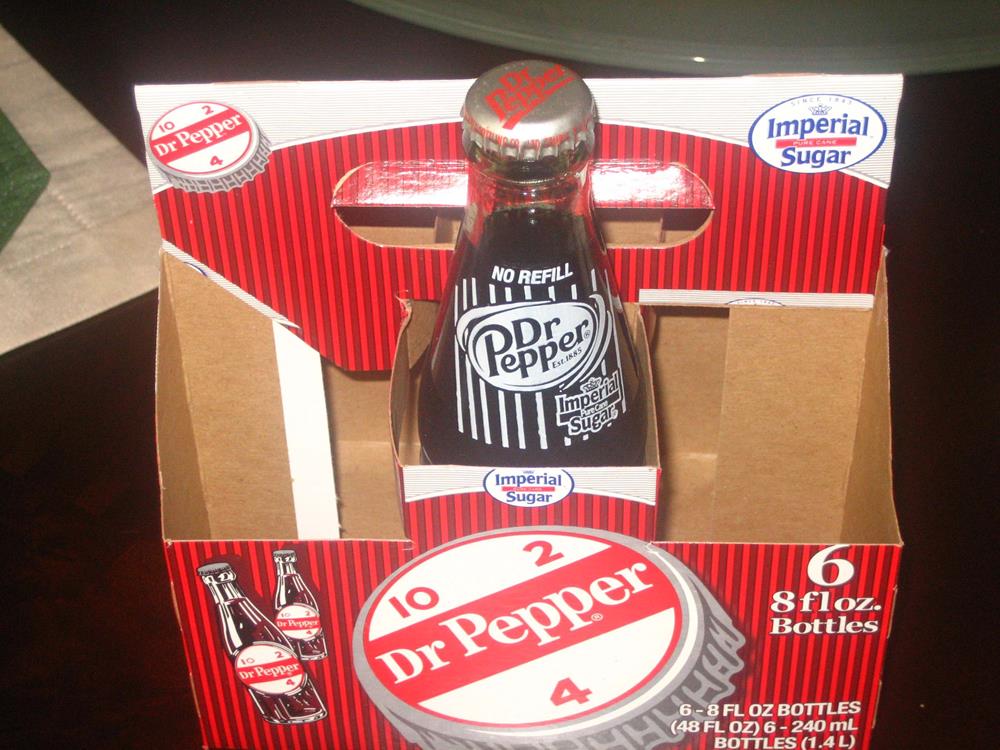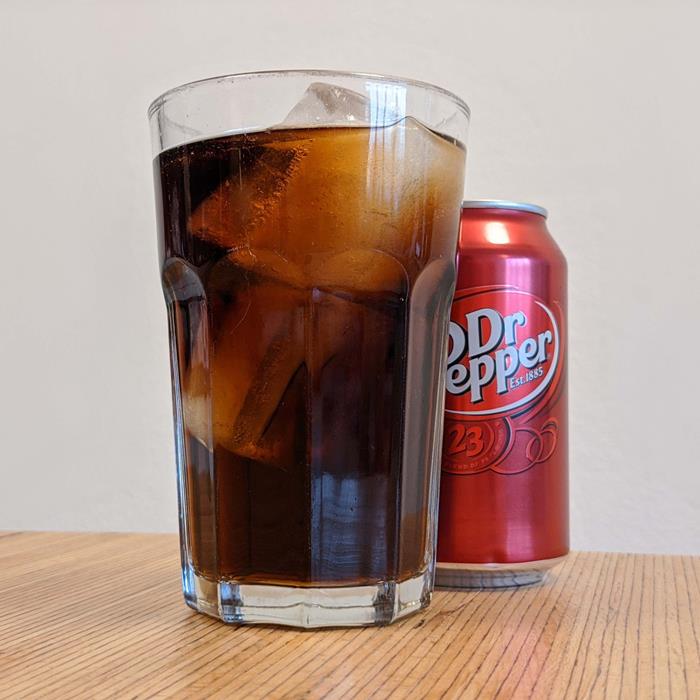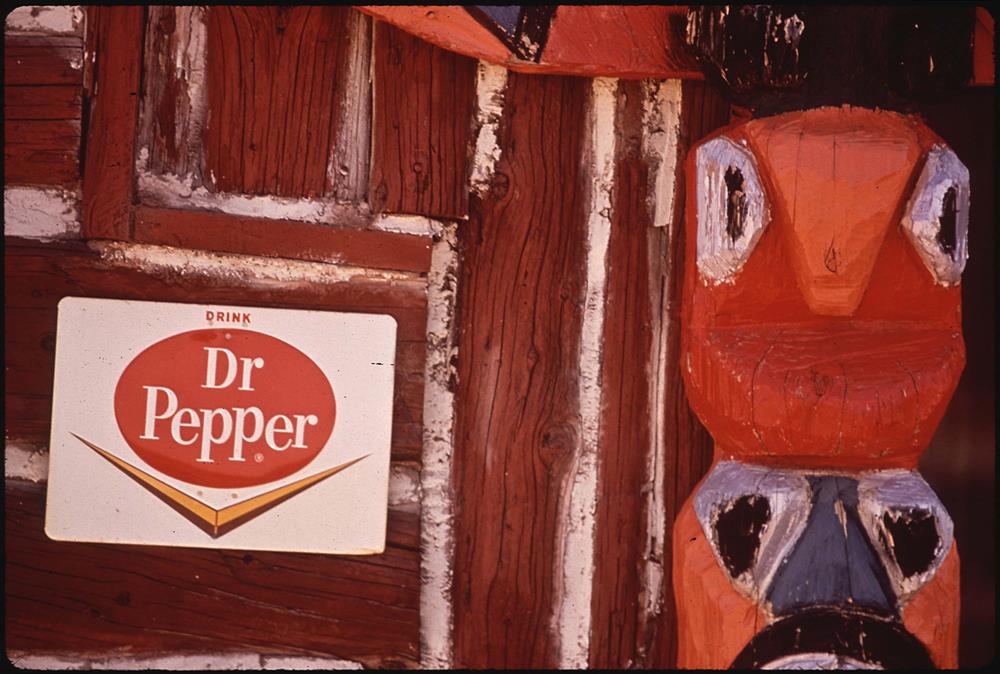Dr. Pepper has a vaguely spicy, distinctive taste that is hard to describe, simply because there’s nothing quite like it. Some people say it has a hint of cherry or a trace of licorice, but it’s hard to describe because it’s a combination of 23 different flavors.
This popular soda is the oldest major soft drink brand in the United States and remains one of the top-selling sodas worldwide. If you want to learn about its history, here’s how it came to be.
History of Dr. Pepper
The Invention in Waco, Texas
In Waco, Texas, a Brooklyn-born pharmacist named Charles Alderton invented a soft drink that soon became known as “Dr. Pepper.” It was 1885—a time when pharmacies often doubled as soda fountains. Alderton was working at Morrison’s Old Corner Drug Store, where carbonated drinks were served at a soda fountain. He was known for trying different flavor combinations rather than simply pouring the usual fruit options.
Eventually, he settled on not one nor two but 23 flavors plus phosphoric acid. To this day, the company holds on to the line that Dr. Pepper is a unique blend of 23 different flavors.
Growing Popularity
When Alderton was testing his new drink, he first offered it to the store owner named Wade Morrison, who found it to his liking. Patrons at Morrison’s soda fountain learned about Alderton’s new drink and liked it as well. It was fast becoming a big hit with customers, who ordered the concoction by asking Alderton to “shoot them a Waco.”
Challenges and Expansion
The drink’s popularity grew, giving Alderton and Morrison trouble manufacturing enough of the soft drink to keep up with the product’s demand. Every establishment that had soda fountain drinks wanted his Dr. Pepper Syrup. Robert S. Lazenby, the owner of the Circle “A” Ginger Ale Company in Waco, was impressed with the drink and was interested in manufacturing, bottling, and distributing the soft drink.
While Alderton was a bright pharmacist, he had no desire to pursue the business and manufacturing end, so he gave the formula to Morrison and let him and Lazenby take over. Lazenby was a professional beverage chemist, and he and Morrison worked subsequently to improve the soft drink and take it further in the market. It was Morrison who named it Dr. Pepper and later stylized it to Dr Pepper. Due to the drink’s success, the two started the Dr Pepper Company.
Branding and Market Introduction
The name “Dr. Pepper” was first used commercially in 1885. The drink was introduced nationally in the United States at the 1904 Louisiana Purchase Exposition as a new kind of soda pop made with 23 different flavors. Coca-Cola was then introduced in 1886, a year after Dr. Pepper was released.
International Success and Rumors
The real defining moment of the drink was at the 1904 World’s Fair when Lazenby and his son-in-law J.B. O’Hara graced the crowds with the Dr Pepper drink. About 20 million people showed up to the fair and tried the yummy drink. Over the years, Dr Pepper went global, emerging on the market in Europe, Canada, Mexico, Asia, South America, Australia, South Africa, and New Zealand.
Since the 1930s, there was a persistent rumor that the drink contains prune juice, but the official Dr Pepper FAQ refutes this, saying that “Dr Pepper is a unique blend of natural and artificial flavors; it does not contain prune juice.” The origin of the rumor is unknown, but some believe a deliveryman started it for a competitor trying to cast aspersions based on the laxative effects of prune juice. However, it may simply be because many people say that Dr Pepper tastes like prune juice.
Advertising and Legal Battles
Early advertisements for this soft drink made medical claims, stating that it aids digestion and restores vim, vigor, and vitality. It also held different marketing slogans like “The friendly Pepper-Upper,” “King of Beverages,” and the current slogan “There’s more to it.”
In 1951, Dr Pepper sued the Coca-Cola Company, which offered $.05-cent cokes. Dr Pepper asserted that the colas were sold below cost and were a restraint on trade.
In 1969, the then president and CEO of Dr Pepper successfully persuaded the Coca-Cola Bottling Company of New York—the world’s largest bottler and distributor of Coca-Cola—to bottle and distribute Dr Pepper in the metropolitan area of New York.
At one point, Dr Pepper sued Coca-Cola again, but this time for copyright infringement, when the latter came out with a Peppo, which was similar in name and taste. Peppo is a soft drink that’s also made of 23 different flavors that were released in the early 1970s. Coca-Cola updated the name to Mr. Pibb in 1972 and then to Pibb Xtra in 2001.
Protecting the Formula
As with Coca-Cola, the formula for the drink is a trade secret, and allegedly, the recipe is kept as two halves in a safe deposit box in two different banks in Dallas.
Limited Edition Dr Pepper Flavors
In recent history, Dr Pepper released limited-edition flavors to give consumers new ways to enjoy the drink:
- 2002: Dr Pepper Red Fusion, a cherry-flavored variety.
- 2004: Dr Pepper Cherry Vanilla, introduced as part of the “Soda Fountain Classics” line.
- 2006: Dr Pepper Berries and Cream, a berry and cream flavored variety.
- 2007: Diet Cherry Chocolate Dr Pepper, a low-calorie cherry and chocolate flavored variety.
- 2009: Dr Pepper Cherry, with a stronger cherry flavor, and Heritage Dr Pepper, a sugar-sweetened version mimicking the original formula used before the early 1970s.
- 2010: Dr Pepper Made with Real Sugar, released to commemorate the drink’s 125th anniversary.
- 2019: Dr Pepper Dark Berry, released in conjunction with the promotion of a movie.
- 2020s: Dr Pepper & Cream Soda, a blend of the classic Dr Pepper and cream soda flavors.
The Story Behind the Dr. Pepper Name
Unraveling the Mystery
There are many theories about the origin of Dr Pepper’s name. According to the Dr Pepper Museum in Waco, there is no official account of how the soda got its name, and they have more than a dozen different stories about it, but none can be verified.
Theories and Speculations
In some versions of the tale, Morrison is credited with naming the drink in honor of his friend and old colleague from Rural Retreat, Virginia, Dr. Charles Pepper. However, US Census records show that a young Morrison lived in Christiansburg, Virginia, which is 40 miles away from Rural Retreat. There was also no evidence of Morrison working for Charles T. Pepper from that area.
Romantic Speculations
Those who are a little more intrigued would like to say that Pepper’s daughter was Morrison’s old love interest. The doctor granted Morrison permission to marry his daughter, but the story doesn’t add up because the girl in question was only eight years old when Morrison moved to Waco.
Alternative Inspirations
A Dr. William Alexander Reed Pepper from Christiansburg is another possible inspiration for the soft drink’s name. In the census showing Morrison living in Christiansburg and working as a pharmacy clerk, Dr. Pepper is recorded on a subsequent page. It appears that Dr. Pepper and Morrison lived close to each other, and Pepper is recorded to have a 16-year-old daughter at the time.
Alderton’s Influence
In other stories, Alderton is said to have gotten his first job working for Dr. Pepper and named the drink as a nod to his early employer.
The “Pep” Theory
Another explanation is that the “pep” refers to pepsin, an enzyme that breaks down proteins into smaller peptides. Pepsin is produced in the stomach and is one of the main digestive enzymes, helping digest the proteins in food.
Marketing Influence
Or it might be a simple story. As with many sodas released in the era, Dr Pepper was marketed as a brain tonic and an energizing pick-me-up. The “pep” in pepper might be from the lift it supposedly imparted to those who drank it.
Historical Icon
Whoever the real Dr. Pepper was, he’s probably the bespectacled, top hat-wearing country doctor from its 1920s label.
Cultural Impact and Iconic Marketing Campaigns
Dr. Pepper has secured its place as a cultural icon in the soft drink industry through a series of innovative and memorable marketing campaigns. These efforts have not only increased sales but have also embedded the brand in the American cultural landscape.
Iconic Campaigns
One of the most notable campaigns is the “I’m a Pepper” slogan, which debuted in the late 1970s. This campaign featured a catchy jingle that invited consumers to identify with the brand in a personal and enthusiastic way. The ads showcased people from various walks of life joining in a dance while singing about their love for Dr. Pepper. This campaign was instrumental in portraying Dr. Pepper as a drink for everyone, enhancing its image as a versatile and inclusive brand.
Evolution of Brand Image and Slogans
Over the decades, Dr. Pepper’s slogans have evolved to reflect changes in consumer attitudes and the cultural milieu. From the straightforward “Drink a Bite to Eat at 10, 2, and 4” in the 1920s, which promoted the drink as a healthy energy booster, to more recent slogans like “One of a Kind”—each tagline has reinforced the brand’s unique position in the marketplace. These slogans have played a crucial role in maintaining the drink’s popularity by continually refreshing its image.
Brand Evolution
The Dr Pepper logo was redesigned in the 1950s. In the new version, the text was slanted, and the font was changed. Designers thought that the period made “Dr.” look like “Di:,” so the period was removed for legibility reasons.
Integration into Popular Media
Dr. Pepper has also made significant inroads into popular media, featuring prominently in movies, television shows, and even music videos. For instance, it was featured in the Robert Zemeckis movie Forrest Gump, where the title character, played by Tom Hanks, guzzles down numerous bottles of Dr. Pepper in a memorable scene at the White House. The brand has been adept at placing its products in settings that resonate with broad audiences, further solidifying its presence in popular culture.
Celebrity Endorsements and Partnerships
The brand has leveraged celebrity endorsements effectively. One memorable campaign featured music legend Gene Simmons from KISS promoting Dr. Pepper Cherry. The commercial, which cleverly played on the song “Calling Dr. Love,” exemplified how Dr. Pepper successfully uses pop culture connections to maintain its relevance and appeal across generations.
Final Word
Dr. Pepper has grown from a regional favorite to a global icon through its innovative marketing campaigns and unique flavor profile. Through memorable slogans like “I’m a Pepper,” strategic media placements, and celebrity endorsements, the brand has ingrained itself in popular culture, resonating with diverse audiences. This strategic positioning not only showcases Dr. Pepper’s distinctive identity but also underscores its enduring appeal across generations, solidifying its status as a beloved, one-of-a-kind beverage.





